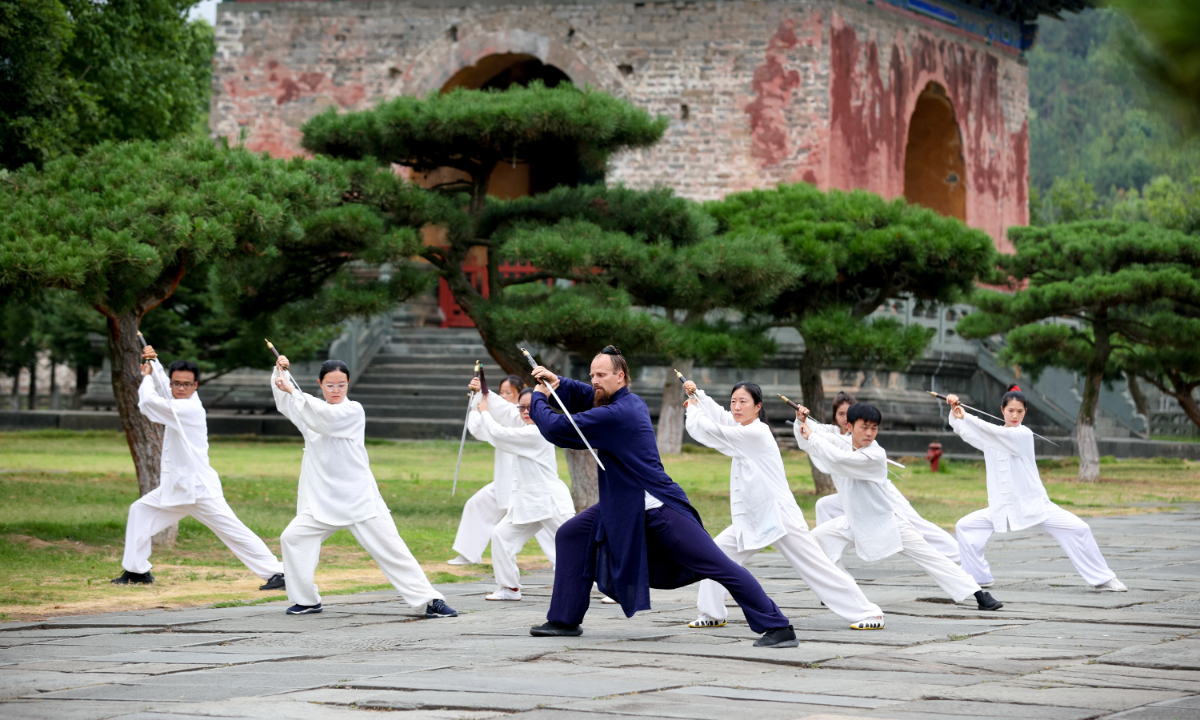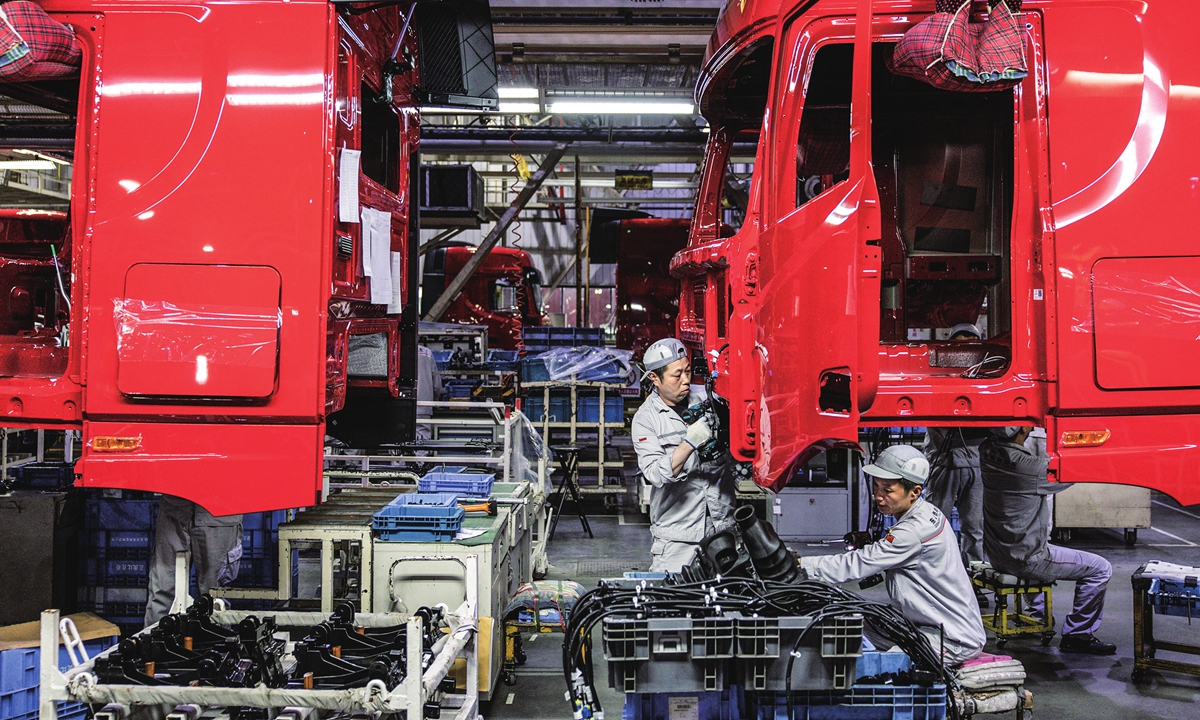
Martial artists in the Wudang Mountains in Shiyan Photo: IC
Home to the Wudang Mountains in the northwestern part of Central China's Hubei Province, Shiyan, an area with a population counting no more than 1,000 in the 1960s, witnessed a meaningful moment in China's industrial construction history. On April 1, 1967, industrial explorers started the construction of China's first modern large-scale automobile factory designed and manufactured entirely by Chinese people.
Shiyan, where the factory is stationed, has also been part of the history of China's automobile industry.
After decades of development, Shiyan has properly dealt with significant changes such as the construction of the central route of the South-to-north Water Transfer Project, and the development of tourism resources.
Nowadays, "Motor City," "the Hanjiang River" and "the Wudang Mountains" have become three world-class representative spots of the city.

Workshop staff check the newly assembled vehicles in Shiyan, a city known for its motor production. Photo: IC
Vehicle harborOnce the truck and commercial vehicle harbor of China, the city was put in question after many vehicle headquarters moved to other cities such as Wuhan in 2013, but the city didn't stand still.
"Now commercial vehicles and trucks of Dongfeng are still being produced in Shiyan," a local person told the Global Times.
In addition, six industrial parks were built one after another providing automotive products that include equipment, parts and new-energy vehicles (NEVs) parks. The city also attracted a batch of new-energy auto parts R&D and production enterprises.
According to statistics from Shiyan's economy and information technology authority, the city has produced 107,000 NEVs in 2022, a year-on-year increase of 77 percent, of which 55,000 were exported, a year-on-year increase of 57 percent, reported Xinhua Daily Telegraph in February.
In order to make the old automobile industrial base glow with a new look, industrial transformation is the key move to change lanes and lead the way, according to the city Mayor Wang Yonghui.
In the future, Shiyan will focus on building a green and low-carbon development demonstration zone, promoting high-end industry, intelligent, and green development.
Northern China's water supplierShiyan is also the location site of the Danjiangkou Reservoir, which is the source of transferred water in the central route of the South-to-north Water Diversion Project and a core water source area of the project.
The South-to-north Water Diversion project aims to channel 44.8 billion cubic meters of fresh water annually from the Yangtze River in southern China to the more arid as well as densely populated Northern China through three canal systems: The eastern route, the central route, and the western route.
Shiyan, located at the upper reaches of Hanjiang River (a tributary of Yangtze River), is where the central route of the project starts.
The central route was officially opened for transferring water on December 12, 2014. The city later set the date as the "Shiyan Ecological Civilization Day" and every year, it will carry out various activities to call for water protection awareness.
Apart from commemoration day, to protect the quality of transferred water, the city has formulated and issued various water source protection regulations.
In 2017, Shiyan formulated a plan on carrying out the River Chief System and appointed nearly 3,000 river chiefs at four levels: the municipal level, county level, township level and village level. Now, the official and voluntary river chiefs and river patrollers at all levels have been organized to protect the 153 rivers in the city.
A local person told the Global Times that at present, cage fish farming in the reservoir area is completely banned and fishing is also prohibited to protect the quality of water.
At present, the water quality of Danjiangkou Reservoir has maintained the national Class II or above standards all year round.
As of March 30, more than 55 billion cubic meters of water has been transferred along the route since its opening in 2014, with millions of people benefiting from the route.
Tourism in Wudang MountainsThe Wudang Mountains in Shiyan has welcomed numerous tourists from both China and around the world.
In December 1994, the ancient building complex such as the Yuxu Palace in the Wudang Mountains was listed as a UNESCO World Heritage Site for their religious significance and architectural achievement.
While climbing the Wudang Mountains, the Global Times reporter was deeply impressed by the ancient building devoid of any modern restoration, the patches of long-grown forests, and monkeys in droves along the uphill roads. A local guide explained that many tourists are attracted by the Wudang martial arts and the Taoist culture, indeed the place has become a pilgrimage site for martial arts practitioners from all over the world.
At the foot of the Wudang Mountains, there are many martial arts schools. Walking in the streets of Shiyan, one can see many stores which sold Taoist uniforms. Sometimes, you can see martial arts learners practicing in the Yuxu Palace very early in the morning.
Here the pace seems to slow down: People in the city really enjoy the peace and quiet while also welcoming tourists from around the globe.
In the first quarter of 2023, the Wudang Mountains received 416,000 tourists, an increase of 23.08 percent over 2019. Tourism has become the second pillar industry of Shiyan.
Growing from an automobile industrial city, after consistent efforts in industrial transformation and upgrading and environment protection over the past several decades, Shiyan has explored its own path of green and sustainable development.